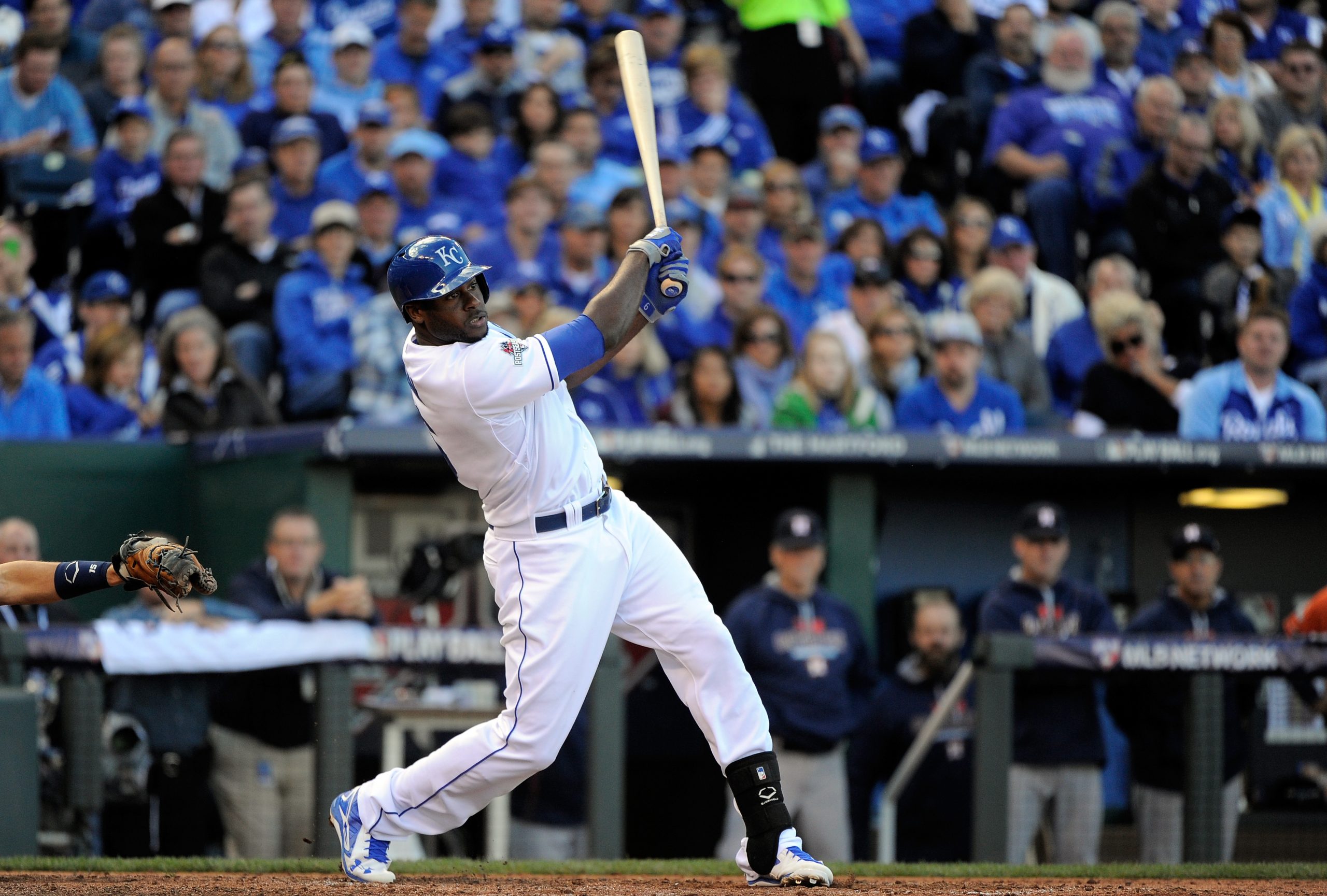Just a month ago, heading into July 21st, the Indians had a half game lead in the AL Central over Kansas City. Both teams were just slightly above .500, but despite the similarities in their record and position, they got there very different ways. Both teams had scored similarly (437 for Cleveland, 428 for KC), but the Indians were significantly better at preventing run, allowing just 374 compared to 489. Using the pythagorean record, the Indians were expected to be 53-40 and the Royals 41-53. If they were 12.5 games back instead of 0.5, the Royals strategy would probably have been a little different at the trade deadline.
The principle behind Pythagorean record (explained in great detail at baseball-reference) seems obvious even if the math isn’t. In a game where wins are decided by who has the most runs, teams that have a large run differential should have a better record than teams that have a small or negative one. It is possible to outplay your run differential, particularly with a great bullpen that can help a team win a lot of one run games, but not pitching when their team is down by a lot, but in general teams will finish the season within three games of their expected record. A team simply can’t consistently allow more runs than they score and expect to contend.
The Royals banked not just this season, but their next potential play-off window as well, that the luck that had allowed them to significantly outplay their expectations would continue throughout the 2017 season. Heading into the deadline, eight Royals had free agency looming in the off-season and with many teams looking for starting pitching and a few looking for outfield help, any reasonable franchise would have tried to move Jason Vargas and Lorenzo Cain to rebuild for the future. Eric Hosmer and Mike Moustakas are also having solid offensive seasons and would certainly have garnered some interest. As much as trading fan favorites hurts, losing them in free agency hurts just as badly and then there is no opportunity of compensation (beyond an extra draft pick the following year if a qualifying offer is made).
Instead of trading off these assets and accepting reality, the Royals traded A.J. Puckett and Andre Davis to Chicago for Melky Cabrera to add more offense. Since being a half game back to start the last week in July and two games back after the Cabrera trade on July 30th, the Royals have went into a tail spin that saw them hit .500 after Saturday’s game against Cleveland. At the same time, the Indians have went 20-9 since the 21st and increased their lead to 6.5 over Kansas City with even the Twins, who decided to sell at the deadline, surpassing the Royals.
Some of this change is personnel based, not simple regression as the Indians added Joe Smith and Jay Bruce in addition to Danny Salazar returning from the DL and pitching like he hasn’t since the first half of 2016 while the Royals lost Salvador Perez and Joakim Soria to injury. Those things explain some of the recent separation, it had been a long time coming. While something like this will rarely normalize in a noticeable way as things generally just return to average slowly over time, the Indians series in Kansas City last weekend may have been the final nail in the coffin for a team that didn’t know it had been dead for months.
Neither team has reached their expected record (Indians at 68 wins rather than the expected 74 and Royals at 62 instead of 58), but both are now within the normal realm of error for Pythagorean record. The total destruction by a score of 15-1 over the first two games of the series were the perfect example of the different directions these teams are headed in.
Of course, while the Royals were likely shooting for the Central with their trade deadline plan, they still have a reasonable chance at a Wild Card. Other than the Yankees, who appear a fairly safe bet to make the post-season along with Boston, Houston and Cleveland, the Wild Card race is filled with near .500 teams. Minnesota, Los Angeles, Seattle, Kansas City, Texas and Baltimore are all within three games of the second spot and all have a legitimate chance of taking it with a sufficiently hot run.
How much that is worth is another case. Since the addition of the second Wild Card in 2012, only Kansas City in 2014 has reached the World Series. The addition of a single extra game puts everything on the line for both Wild Card teams and even if they win, they have to face the top team in the league the next day, most likely with their top starter spent.
For the Kansas City faithful, however, they need to question whether the chance of beating five other teams for the final Wild Card just to get into a one game play-off was worth not getting the most out of their roster assets when they could have. The Royals pay-roll is already at a franchise record, $10M higher than last season, and it’s hard to imagine them spending significantly more to keep their aging roster around long term. The Royals play-off window just slammed shut and they should have jumped out it while they still had a chance.
Add The Sports Daily to your Google News Feed!
